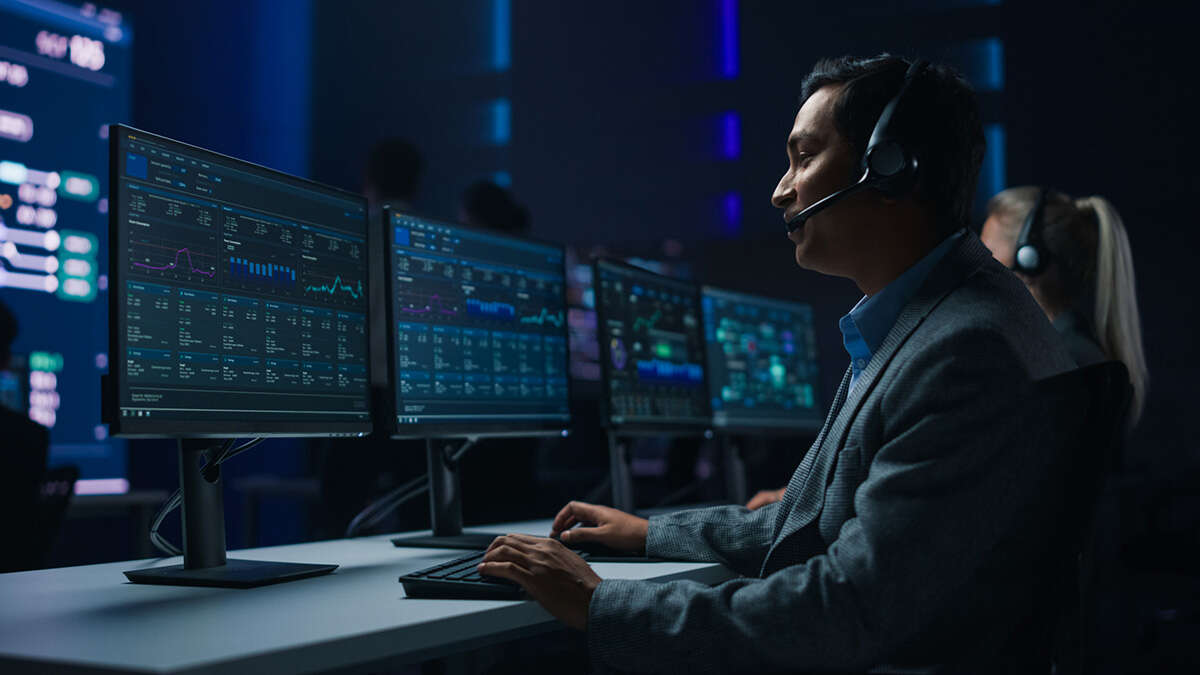
The evolving cyberthreat landscape has come into full focus within the past few years, with managed service providers (MSPs) in many cases responsible for ensuring their customers are fully protected.
This is due, in part, to the sudden change from in-office work to a remote workforce, which has expanded MSPs management exponentially. Not only are MSPs required to support unsecured home networks, but they also must expedite their customers’ digital transformation, from adopting SaaS platforms, to accommodating a BYOD policy, to expanding their web presence with ecommerce capabilities. To top it off, cybercriminals were, and are still, taking advantage of these changes.

The evolving cyberthreat landscape means MSPs must maximize the value from their cybersecurity offering, specifically their remote monitoring and management (RMM) tools. (Photo by gorodenkoff/iStock)
At the same time, the growing trend of supply chain attacks means that MSPs must not only protect their customer but also secure their own environment to prevent attacks from breaching their administrative platforms to gain access to customers’ environments.
For this reason, MSPs must maximize the value from their cybersecurity offering, specifically their remote monitoring and management (RMM) tools.
RMM tools play an important role in detecting anomalies, tracking increased endpoints, and remediating and managing customers’ environments remotely. Emphasizing these points will assist MSPs in realizing their full potential through their RMM and help customers gain a better understanding of their MSP’s offering and partnership.
RMM key features
So what do MSPs need to look for in an RMM to achieve the most value? Mark Whiffen is a senior product manager at Barracuda MSP. In this role, he oversees the product direction, development, and delivery of Barracuda Managed Workplace RMM and Barracuda’s partner services. He has over 20 years of Security and Public Safety software and service experience at companies such as Avast Software, Verint Systems, Nexsan, and Titus.
“To obtain and deliver the most value as possible, MSPs should look for an RMM that provides several key features. These include continuous monitoring and alerting for any cyberthreats that breach a site or network. Cybersecurity is a process, not a ‘one and done’ thing,” he explains.
Whiffen also points to RMMS which offer “enhanced AI and machine learning to protect against even the most sophisticated threats.
“The RMM should connect to any employee/end-user device, wherever it is located, to monitor threats and remediate attacks. MSPs need to worry about securing users, devices, and data. It should provide continuous assessments of the security strength of networks and customer sites that make it easy to identify any vulnerabilities existing within a customer’s security posture and alert them to make the necessary, recommended changes.
“Additionally, it should have reporting that highlights any new vulnerabilities that have emerged and the progress the MSP has made in resolving previously identified weak points in the customers’ security posture.”
Finally, Whiffen says that by integrating it with your RMM vendor’s other cybersecurity offerings “will also allow MSPs to visit a ‘one-stop shop’ and only contact one line of support if they ever experience an issue or have a question or request.”
A multi-layered approach
Cyberattacks will continue to increase, both in volume and complexity, so MSPs should invest in RMM and other tools that are easily integrated, streamline these tools where possible, and make sure to include security assessments as part of their offerings. MSPs can offer assistance in defining required cybersecurity policies for individual end-users at their client organizations and move to implement the suitable services needed to meet these policies.
Further, an RMM can go beyond the initial identification of existing gaps and enable MSPs to address them – which by default uncovers sales opportunities. RMM also helps SMBs meet specific compliance requirements for customers in key verticals such as healthcare, financial services, and the public sector.
“An RMM should enable clients to operate to the best of their abilities while remaining secure despite the evolving cyberthreat landscape,” says Whiffen. “Cybercriminals (and their attacks) have become so much more sophisticated. Today and moving forward, security requires a multi-layered approach to protecting the user, their devices, company data, and applications, which RMM is well-positioned to do.
“MSPs need to take a closer look at how they leverage their service delivery tools, especially the RMM, because it will play an even more important part in the MSP’s arsenal. They then need to look at how to best deliver and monetize those services.”






